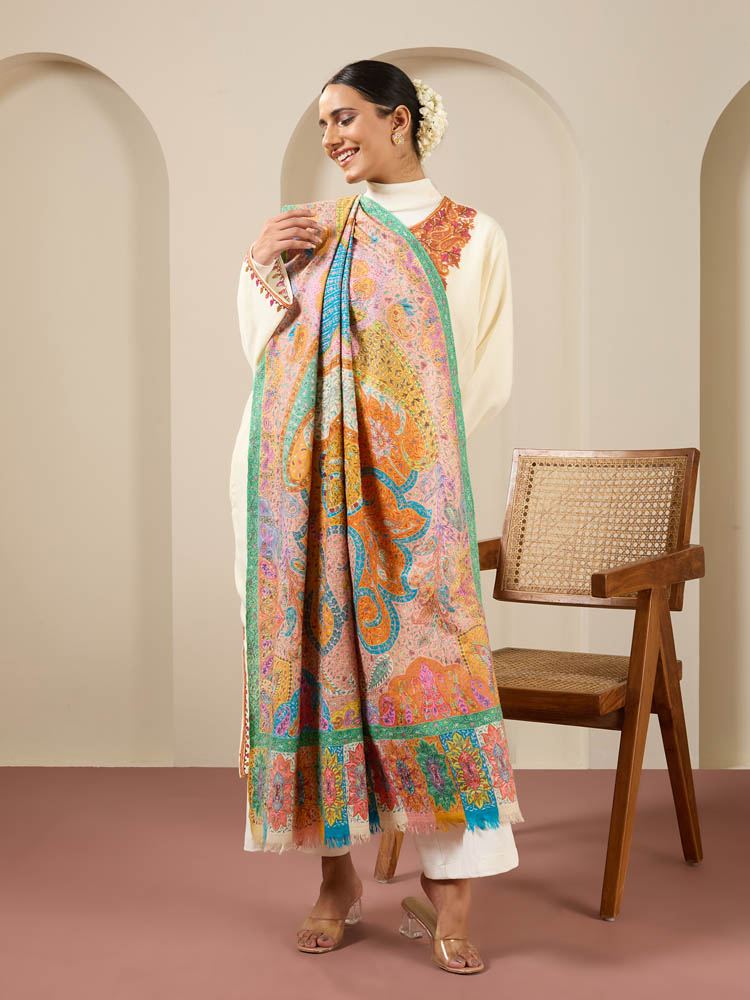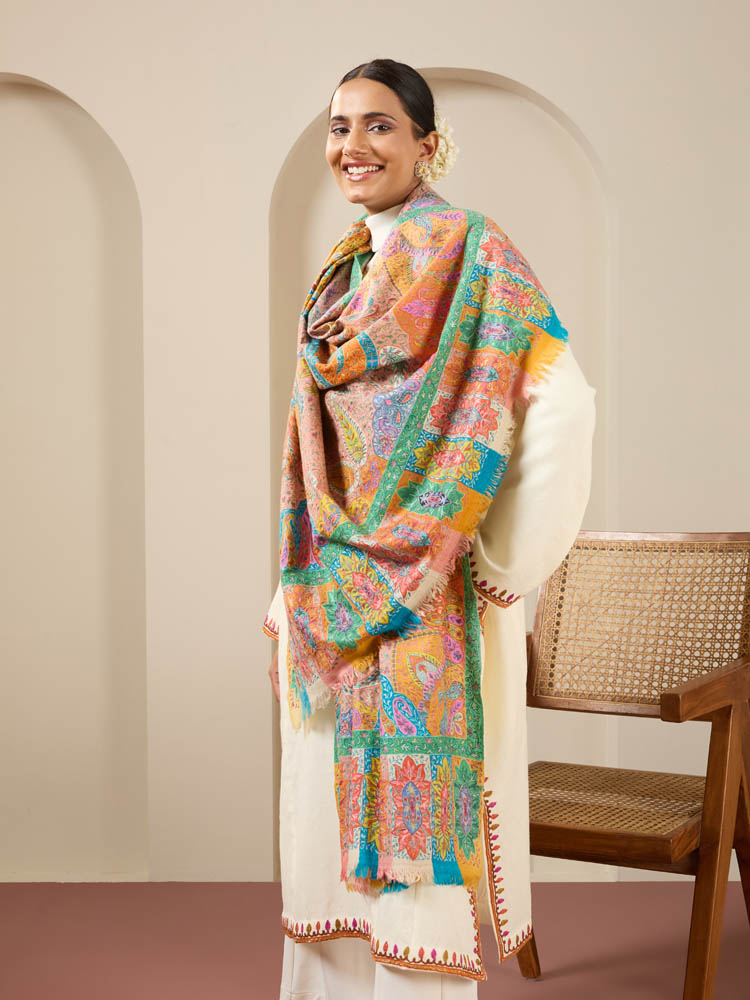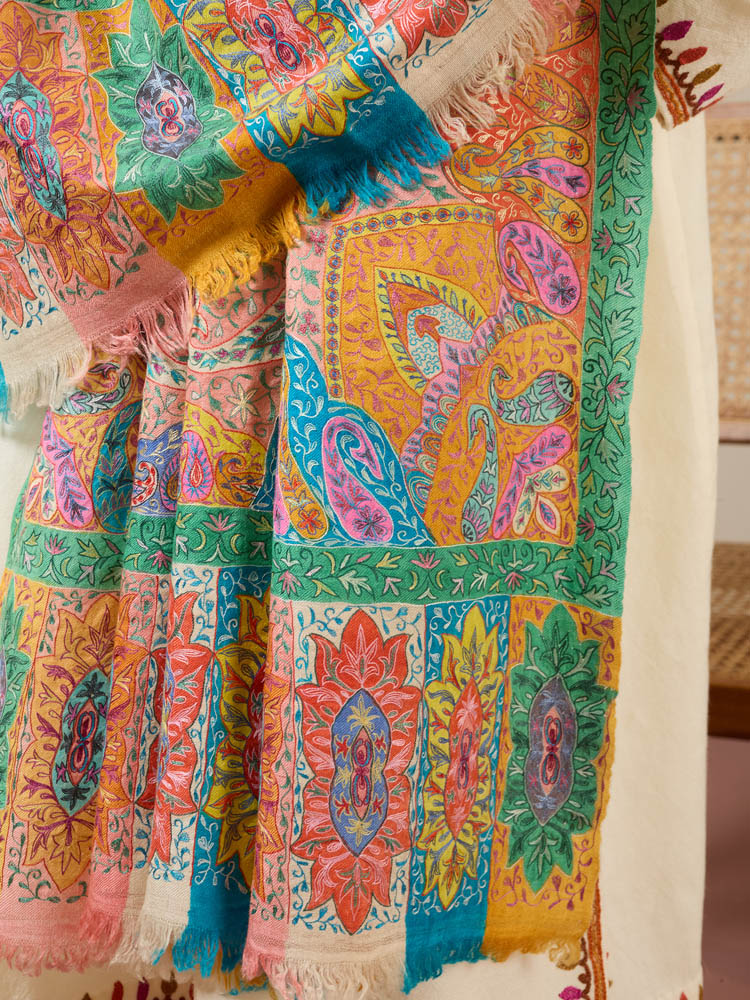Pashmina is not just a fabric – this is a legacy. A pashmina shawl from Kashmir is known for its unmatched legacy, warmth and elegance, and is more than a fashion statement. This is the result of centuries -old craftsmanship, Himalayan heritage, and the skill of master artisans.
But what exactly goes into making a real Pashmina shawl? And why is hand woven Pashmina so different from what’s commonly sold online?
Let’s explore the complete journey of a real pashmina – from the mountains of Ladakh to your closet – and understand why the handcrafted Kashmiri Pashmina is different.
How Are Authentic Pashmina Shawls Made in Kashmir?
The creation of a real Pashmina shawl is a craft of love, involving complex steps. Here’s how it begins:
1. Sourcing the Wool – The Changthangi Goat
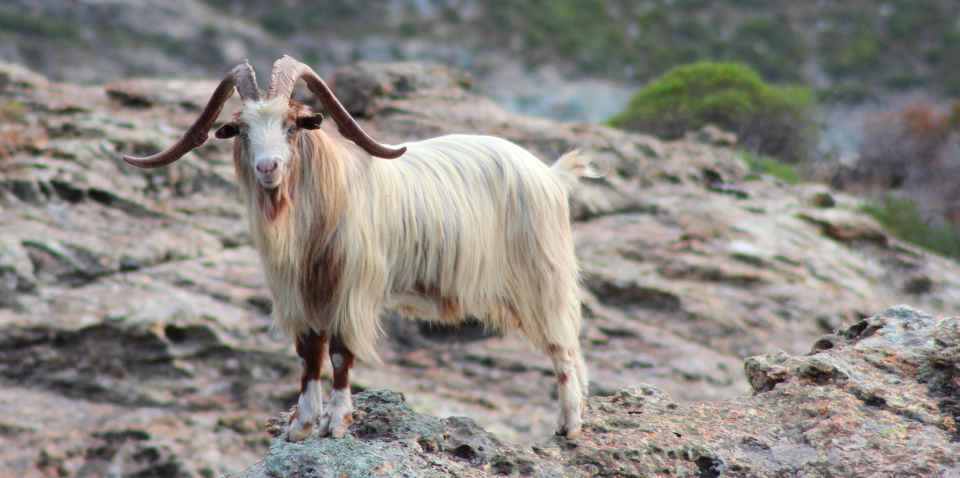
The authentic Pashmina process begins in Ladakh, where Changthangi goats produce a fine undercoat to avoid cold winters. This ultra-soft fiber, known as Pashm, is combed (not sheared) by hand once a year.
Each goat produces only 80-170 grams of usable wool per season – an important cause of its rarity and premium value.
2. Cleaning and Sorting
The Raw wool is carefully cleaned without chemicals to preserve its natural softness. Only the best variants are selected for spinning.
3. Hand Spinning on the Charkha
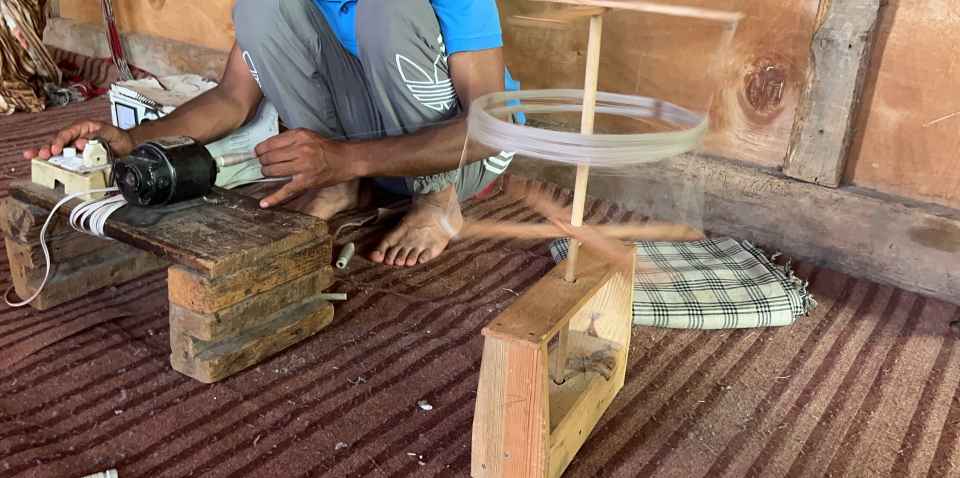
Skilled craftsmanship use a traditional spinning wheel (charkha) to convert raw fibers to delicate yarn. This hand-spun yarn is much softer and finer than machine-spun alternatives.
4. Hand Weaving the Shawl
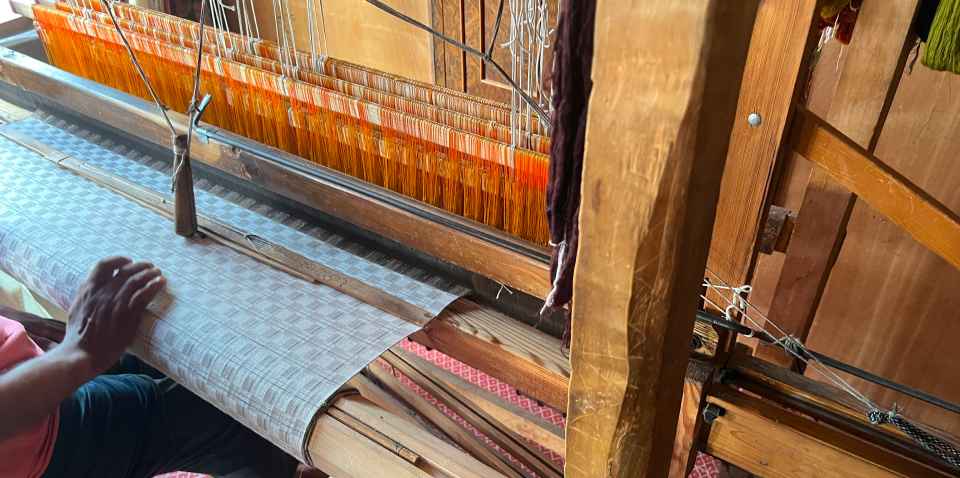
The yarn is then woven on wooden looms by expert Kashmiri weavers. Whether it’s a simple design or a complex kani pattern, the weaving process can also take weeks or months based on intricacy.
5. Dyeing, Embroidery & Finishing
Once woven, the shawl can be colored or lying in its natural cream tone. Some pieces are decorated with hand embroidery such as Sozni or Tila, giving a unique artistic touch.
Finally, the shawl is washed, softened and inspected carefully for quality before it is packed and sent to you.
What Makes HandWoven Kashmiri Pashmina Different from Machine-Made Shawls?
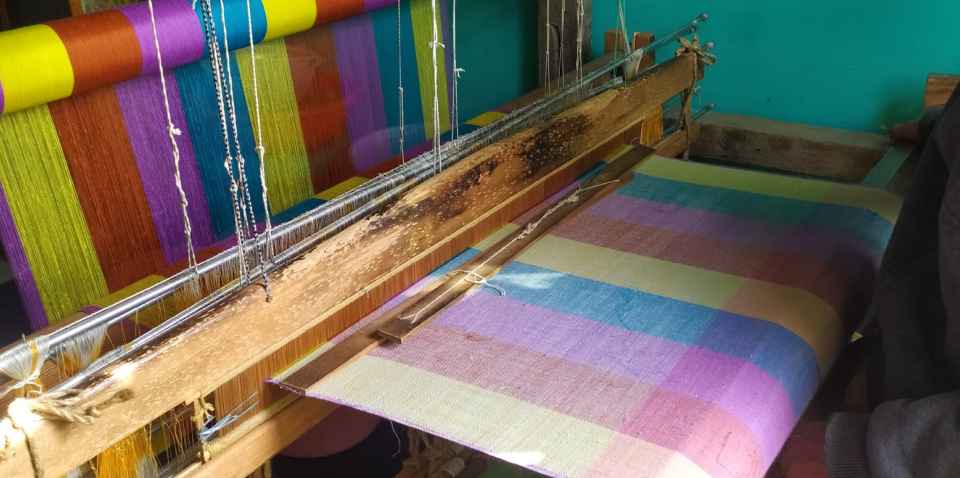
Many stores sell duplicate or mixed fabrics as “Pashmina,” but real, handwoven Pashmina is completely different from those machine-made products.
1. Purity of Wool
- Handwoven Pashmina: Made from 100% pure Changthangi goat wool.
- Machine-made shawls: Often use blended fibers like viscose or acrylic.
2. Craftsmanship
- Handwoven: Every thread is spun and woven manually, honoring centuries of Kashmiri tradition.
- Machine-made: Produced quickly, lacking the human touch and cultural heritage.
3. Texture and Feel
- Authentic Pashmina: Incredibly soft, feather-light, yet warm and breathable.
- Fake Pashmina: Often coarse, heavier, or unnaturally shiny.
4. Design Detailing
- Handwoven: Includes artisan-crafted patterns and embroidery that can take weeks to finish.
- Machine-made: Printed or mass-copied designs with little originality.
5. Durability and Value
- A real Pashmina lasts for decades, often passed down as an heirloom.
- Authentic Pashmina never goes out of style — its look complements both traditional and modern outfits.
Experience the Real Journey with KCS Kashmir Shawl Emporium
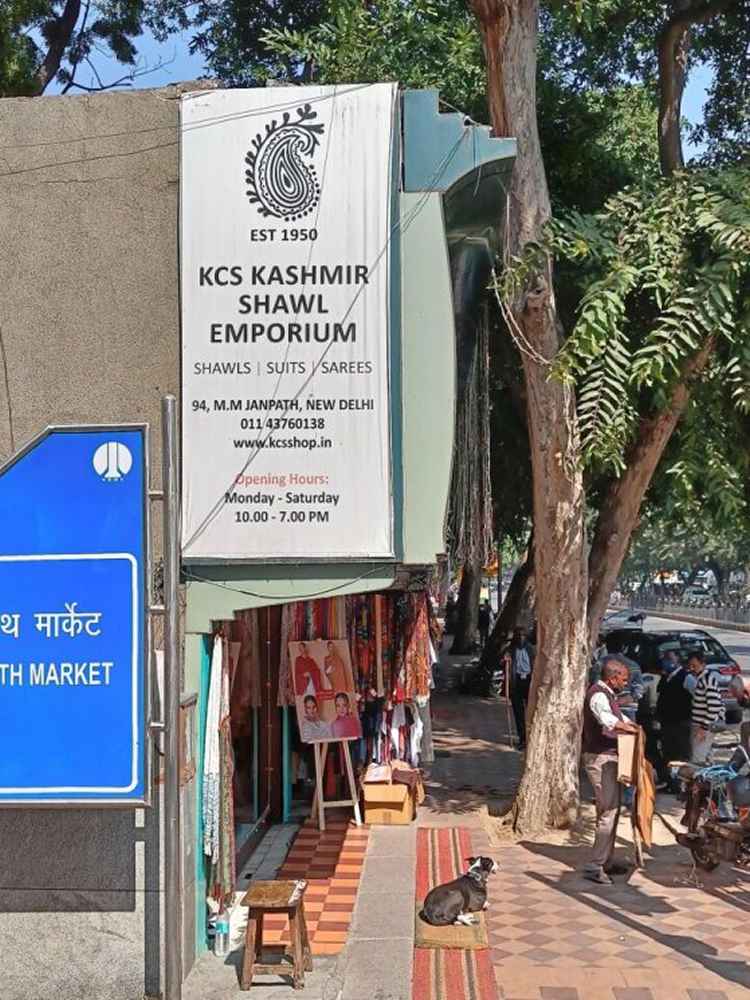
At KCS Kashmir Shawl Emporium, we’ve been delivering authentic, handwoven Pashmina shawls since 1950. Each shawl in our collection:
- Crafted from 100% pure Pashmina wool
- Comes with a certificate of authenticity
- Supports traditional Kashmiri artisans
- Globally shipped with care and quality assurance
Whether you’re gifting a loved one or adding a timeless piece to your collection, we ensure that what you get is a real product of Kashmiri -capacity.
Wrap Yourself in a Story, Not Just a Shawl
The next time you wear a KCS Kashmir Shawl Emporium’s Pashmina shawl, remember — it’s not just an accessory. It’s the journey of Himalayan goats, Kashmiri artisans, and generations of tradition, coming together in a shawl that brings warmth, beauty, and heritage to your closet.
Explore our original collection today






